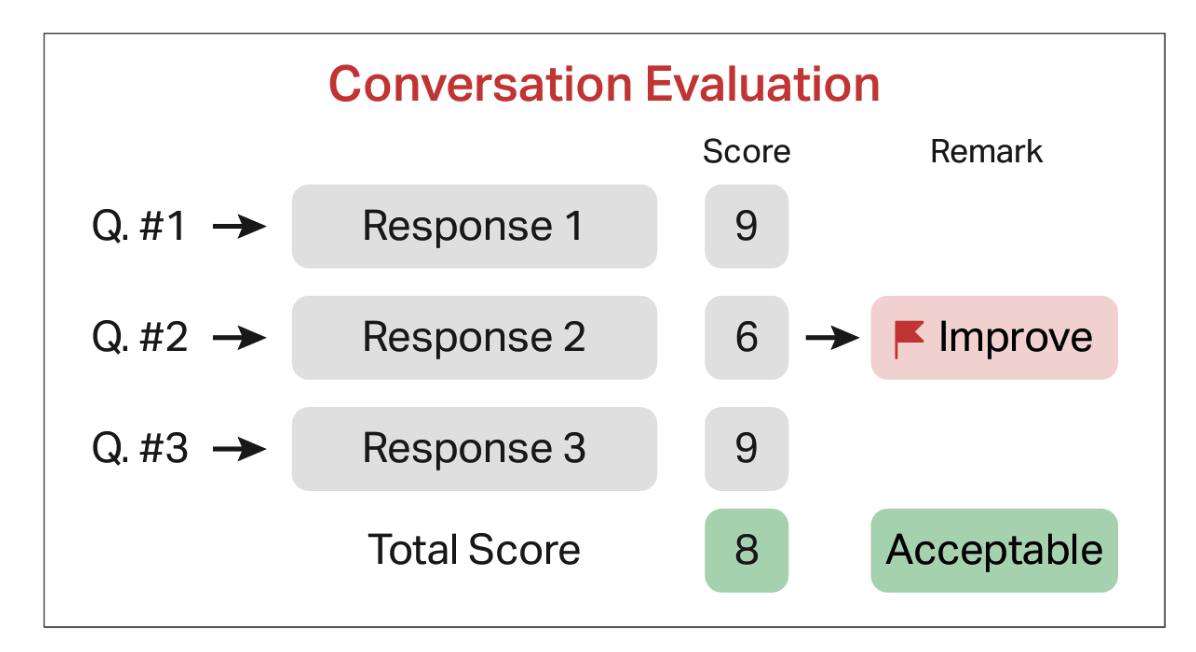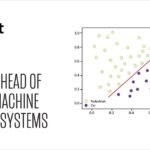In the world of AI development, annotated data is essential. As datasets grow and models become increasingly complex, traditional manual annotation methods are proving too slow and costly to meet the demands of real-world applications. This is especially true in sectors like healthcare, autonomous vehicles, and geospatial intelligence, where millions of data points require precise, domain-specific labeling.
That’s where pre-labeling automation steps in. By using machine learning models, rule-based logic, or task-specific algorithms to generate first-pass annotations, known as pre-labels, organizations can give their annotation workflows a critical head start. These AI-generated labels act as rough drafts, which human annotators then validate, refine, or correct. The result? A streamlined workflow that lets human experts focus on edge cases and QA, while automation handles the bulk work.
As AI becomes more deeply integrated into products and services, the need for high-quality training data is only intensifying. Pre-labeling automation is emerging as a transformative approach, one that combines machine efficiency with human expertise to revolutionize how we prepare data for AI training.
A recent 2024 study introduced SPAM, a semi-automatic video annotation system for object tracking, achieving comparable tracking performance while using only 3–20% of the human labeling effort, a reduction of up to 97% in manual work.
The Data Labeling Challenge
Data labeling has long been the unsung hero of AI development. Before any machine learning model can recognize objects in images, understand natural language, or make predictions, it needs vast amounts of accurately labeled training data. Traditionally, this process has been manual, time-intensive, and expensive. Consider the complexity: a single autonomous vehicle dataset might contain millions of images, each requiring precise annotation of vehicles, pedestrians, traffic signs, and road markings. In medical AI, radiological images need expert annotation of anatomical structures and pathological findings. The manual approach to such tasks can take months or even years, creating significant delays in AI deployment.
What is Pre-Labeling Automation?
Pre-labeling automation refers to the use of machine learning models, rule-based systems, or domain-specific algorithms to generate initial annotations on raw data called “pre-labels.” These pre-labels serve as a first draft that human annotators then review, refine, or correct. The goal is to reduce the time and effort required to label data manually, while still maintaining high quality through expert oversight. This process is a shift from starting the annotation from scratch. Instead, it leverages existing AI capabilities to jumpstart the annotation cycle, creating a feedback loop where AI helps train better AI. Whether you’re working with medical images, autonomous driving footage, geospatial maps, or financial documents, pre-labeling automation enables faster iteration and smarter workflows.
How Does Pre-Labeling Automation Work?
The pre-labeling workflow follows a structured loop:
- Model Training: A model is trained using a labeled dataset.
- Pre-Label Generation: New raw data is automatically annotated by the model.
- Human-in-the-Loop Review: Human annotators verify and refine these annotations.
- Feedback Loop: Corrections are used to improve the model, enhancing future pre-label quality.
This cyclical model ensures that automation speeds up annotation without sacrificing accuracy. It also reinforces the importance of human expertise at every validation step.
The Human-AI Collaboration Model
The key to pre-labeling success lies in collaboration, not substitution. Automation tackles repetitive and predictable tasks, while human experts bring contextual understanding to complex or ambiguous cases. This human-in-the-loop (HITL) model creates a continuous improvement cycle, where machines assist, and humans guide, ensuring the labeling process remains adaptable, trustworthy, and domain-aware.
Benefits of Automated Pre-Labeling
Pre-labeling automation offers AI teams significant advantages by blending automation with expert oversight:
- Speed and Efficiency: Automated tools can pre-label large datasets in a fraction of the time required for manual annotation. In clinical NLP use cases, pre-labeling has been shown to reduce per-entity annotation time by up to 21.5%, significantly accelerating project timelines.
- Cost Effectiveness: With less manual effort required per task, organizations can reduce labeling costs while maintaining high standards. This is especially important for industries where large-scale datasets are common, such as autonomous driving and geospatial AI.
- Higher Consistency and Quality: Automation applies the same logic and labeling criteria across the dataset, minimizing issues like annotator variation or label drift. When paired with expert review, this results in more uniform and trustworthy data.
- Better Use of Human Expertise: Rather than spending time on repetitive labeling, skilled annotators can focus on edge cases, corrections, and complex scenarios that require domain knowledge, improving both productivity and dataset quality.
- Faster Time-to-Market: Accelerated data preparation shortens development cycles, allowing AI models to be trained and deployed faster.
Technical Challenge in Pre-Labeling Automation and How iMerit Solves Them
While pre-labeling can drastically improve speed, it brings complex technical challenges that must be managed to preserve data quality and model performance. Here’s a closer look at some of the most critical ones:
1. Model Drift and Inaccurate Pre-Labels
Problem: Pre-labeling often relies on pre-trained models or heuristics. But when the data distribution shifts, like from urban to rural environments, from clear to foggy weather, or from daytime to night, model accuracy drops significantly. Annotators spend more time fixing incorrect pre-labels than they would starting from scratch, negating automation’s intended time savings. This drift can be subtle, often not caught until it’s already polluting the dataset.
iMerit’s Solution: Ango Hub integrates confidence scoring, drift detection metrics, and region-specific tagging to isolate areas where the model underperforms. These segments are routed to expert annotators with domain familiarity, ensuring human validation where it matters most.
2. Overfitting to Noisy Pre-Labels
Problem: When annotators over-rely on automation, especially in repetitive tasks, they may unconsciously accept flawed pre-labels. Without strong QA, these noisy labels enter the dataset and degrade the final model’s performance. Mistakes accumulate in downstream training data, especially in edge cases where pre-labeling is weakest. This causes model bias, instability, and poor generalization.
iMerit’s Solution: iMerit builds multi-layer QA workflows into every pre-labeling project. Annotators are trained to approach pre-labels as tentative suggestions, not authoritative labels, and apply strict review to ambiguous or low-confidence cases. QA auditors cross-validate difficult annotations using consensus scoring and escalation logic.
3. Temporal Inconsistency in Sequential Data
Problem: In video, LiDAR, or multi-frame sequences, frame-by-frame pre-labeling can lead to misaligned bounding boxes, ID mismatches, or “jitter” in object tracking. Downstream models struggle with motion prediction, object permanence, and interpolation. These inconsistencies break the continuity essential for tasks like behavior prediction or SLAM.
iMerit’s Solution: Ango Hub supports keyframe anchoring, object ID persistence, and temporal smoothing algorithms. Annotators work with tools that visualize sequences holistically, enabling continuity checks across frames and ensuring consistent tracking even in occlusions or rapid movement scenarios.
4. Class Imbalance in Pre-Labels
Problem: Pre-labeling systems are usually more accurate on dominant object classes (e.g., vehicles, roads) and fail to detect rare, small, or edge-case objects like fallen branches, animals, or strollers. This results in datasets that overfit to common cases and generalize poorly. Critical edge cases are underrepresented, reducing model robustness in safety-critical applications.
iMerit’s Solution: Ango Hub tracks class distribution across annotations and flags underrepresented classes in real-time. iMerit’s workflow includes hard-negative mining, where annotators are directed to look for rare or misclassified objects and ensure they’re labeled accurately, even when not surfaced by automation.
5. Infrastructure Load and Latency
Problem: Running automated pre-labeling, especially on 3D data like LiDAR or radar, requires significant GPU compute, efficient model serving, and latency control. If pre-label generation is slow or unstable, it delays annotation flow, causes bottlenecks, and reduces throughput for perception and labeling teams.
iMerit’s Solution: Ango Hub is built to ingest pre-labels from optimized inference environments. It supports asynchronous label imports, low-latency API integrations, and scheduling for large-scale jobs. This ensures consistent throughput even when working with petabyte-scale sensor data across distributed teams.
Operational and Compliance Challenges in Pre-Labeling and iMerit’s Approach
While pre-labeling automation accelerates annotation, it introduces complex edge cases that require robust human-in-the-loop workflows and platform-level safeguards. Below are some of the most critical challenges and how iMerit’s teams and Ango Hub infrastructure are purpose-built to overcome them:
Accuracy Validation
While automation boosts speed, it doesn’t guarantee precision. Pre-labels need careful review before they’re production-ready.
iMerit’s solution: Structured QA pipelines in Ango Hub use task-specific validation steps, confidence scoring, and automated detection of unusual or inconsistent labels. Custom review workflows ensure that every annotation meets high-quality standards across complex and growing datasets.
Domain Expertise
Generic models often miss the nuances of specialized fields like radiology, autonomous mobility, or geospatial mapping.
iMerit’s solution: A global workforce trained in vertical-specific annotation. From certified radiology reviewers to automotive tracking experts, iMerit brings human expertise to refine AI-generated pre-labels with deep contextual understanding.
Security and Compliance
Handling sensitive data in sectors like healthcare or finance demands airtight security and compliance with standards like HIPAA and SOC 2.
iMerit’s solution: Enterprise-grade data governance, including SOC 2 Type II compliance, HIPAA-ready workflows, and deployment flexibility—cloud, on-prem, or hybrid—via Ango Hub.
Model Bias Prevention
Automated pre-labeling can amplify existing biases in training data, affecting fairness and generalization.
iMerit’s solution: Human-in-the-loop workflows with inter-annotator agreement scoring and feedback analytics help surface and correct bias patterns early in the pipeline, so you train more responsible models.

With iMerit, organizations don’t have to choose between automation and accuracy. We deliver both through the seamless integration of scalable technology, domain-trained talent, and MLOps-ready workflows that keep quality, speed, and compliance in perfect balance.
Real-World Applications
Pre-labeling automation is actively transforming how data is labeled across industries:
- Healthcare AI: In medical data annotation, pre-labels generated by AI systems, such as through auto-segmentation in imaging, can highlight relevant structures, anomalies, or clinical indicators. These initial labels enable experts like radiologists to review and refine data more efficiently, reducing manual effort while ensuring accuracy in high-stakes medical workflows.
- Autonomous Mobility: Pre-labeling for 2D/3D object detection in multi-sensor (LiDAR, radar, video) data helps teams label driving scenes faster, without compromising context or safety.
- Geospatial AI: AI-assisted polygon annotations for geospatial projects make it easier to map urban environments, agriculture, or disaster zones at scale.
- Agriculture: Drone imagery pre-labeled with crop boundaries or disease detection regions boosts productivity for precision agriculture teams.
Smarter Pre-Labels, Powered by Human Intelligence
iMerit integrates automation into a robust human-led annotation process. Our annotators are domain-trained from certified radiology experts to automotive data specialists, ensuring that every pre-label is reviewed with context and expertise. We blend automation and human validation to guarantee both speed and precision. This human expertise is embedded into Ango Hub’s annotation environment, enabling seamless validation of pre-labels through task-specific review pipelines and structured QA controls.
How Ango Hub and iMerit’s 3D Point Cloud Tool Power Pre-Labeling Workflows
Ango Hub, along with iMerit’s 3D Point Cloud Tool (3D PCT), is purpose-built to handle automated, high-volume annotation with human-in-the-loop oversight. These platforms support everything from ingesting pre-labels and running QA to automating batch cycles and syncing with multi-sensor perception pipelines.
| Feature | Benefits |
|---|---|
| Model Ingestion | Upload and manage raw data from cloud storage, supporting point cloud, radar, and 2D image formats at scale. |
| Pre-Label Imports | Bring in pre-annotations from your models or external pipelines to jumpstart human-in-the-loop workflows. |
| QA Automation | Apply rules to automatically flag low-confidence, inconsistent, or drift-prone annotations for targeted human review. |
| Ontology & Labeling Versioning | Maintain consistent label definitions, support multiple model iterations, and track label history for change management and compliance. |
| Annotation Analytics | Get visibility into annotator performance, pre-label efficiency, class distribution, and model agreement. |
| Sensor Fusion Support | Annotate fused multi-modal data (LiDAR + video) in a unified environment with synchronized timelines. |
| Temporal Consistency Tools | Use keyframe anchoring, object ID tracking, and frame interpolation for sequence-level consistency. |
| Task Lifecycle Management | Programmatically create, assign, and manage annotation batches with full visibility into task status. |
| Issue Tracking & Requeues | Auto-create issues or requeue tasks that fail QA or validation checkpoints for immediate follow-up. |
| Validated Data Export | Export reviewed, production-ready annotations in structured formats ready for ML model training. |
With Ango Hub, you can combine pre-labeling automation with expert QA and integrate it directly into your MLOps cycle.
Security, Compliance, and Deployment Flexibility
Enterprise customers, especially in healthcare, fintech, and the public sector, AI, trust iMerit for its commitment to data security and workforce governance.
- SOC 2 Type II compliance
- HIPAA-ready workflows
- On-prem, hybrid, and air-gapped deployments
- Global, managed annotation workforce with vetted access control
Ango Hub supports pre-labeling automation workflows in secure environments, making it ideal for regulated sectors where data governance and auditability are critical.
Conclusion: Pre-Labeling is a Strategic Advantage
Pre-labeling automation isn’t just a time-saver; it represents a strategic evolution in how AI training data is created. By combining AI-generated first drafts with expert human validation, organizations can prepare higher-quality datasets with more speed, reliability, and operational efficiency.
At iMerit, we blend advanced automation with domain-trained human-in-the-loop review to deliver production-ready datasets faster. Our integrated platform, Ango Hub, brings it all together: model ingestion, QA pipelines, analytics, compliance, and seamless API connectivity.
For complex multi-sensor workflows, our 3D Point Cloud Tool offers robust capabilities for LiDAR, radar, and camera fusion, helping teams manage spatial annotation, temporal consistency, and labeling at scale.
As AI adoption accelerates, the ability to prepare high-quality data securely and efficiently is a true competitive advantage. With iMerit’s expert teams, Ango Hub, and 3D PCT, that advantage is built in.
Ready to Cut Annotation Time Without Compromising Quality?
Run a pre-labeling pilot on your data with iMerit’s expert teams and Ango Hub’s automation capabilities.


























